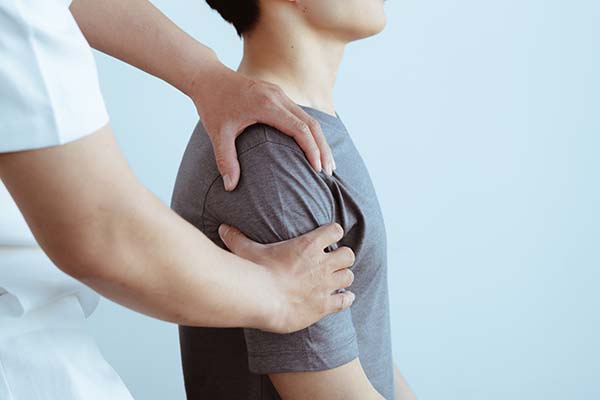Physical Therapy for a Shoulder Rotator Cuff Injury

A shoulder rotator cuff injury can be a painful and debilitating experience. Whether you injured your shoulder due to a sports-related incident, a fall, or repetitive motions, recovery from this injury can be long and challenging. However, an experienced physical therapist can guide you through the healing process, helping you regain strength, mobility, and function in your shoulder. This blog will explore the important role of physical therapy in rehabilitating a shoulder rotator cuff injury.
Understanding the rotator cuff
The rotator cuff is a group of muscles and tendons surrounding the shoulder joint. It provides stability and allows a wide range of motion. Injuries to the rotator cuff can vary in severity, ranging from mild strains and tears to tendonitis or bursitis. Regardless of the injury, seeking the expertise of a physical therapist is essential for optimal recovery.
What to expect from physical therapy for a shoulder rotator cuff injury
Evaluation and specialized treatment plans
When visiting a physical therapist for a shoulder rotator cuff injury, the first step is a comprehensive assessment. The physical therapist will evaluate the individual's range of motion, strength, posture, and overall shoulder function. The assessment helps the physical therapist understand the patient's injury and design a specialized treatment plan to address their specific needs and treatment goals.
Physical therapists utilize a variety of techniques and methods in their treatment plans. These may include exercises to improve flexibility, manual therapy to reduce pain and increase mobility, and techniques like ultrasound or electrical stimulation to promote healing and reduce inflammation. As a result, the treatment plan will be tailored to each patient's unique needs and therapy goals.
Progressive rehabilitation and pain management
One of the main goals of physical therapy for a shoulder rotator cuff injury is to alleviate pain and gradually restore function. The physical therapist will guide the patient through progressive exercises and movements to rebuild strength, improve flexibility, and restore their range of motion. They will also educate the patient on proper body mechanics and techniques to prevent future injuries.
A physical therapist will closely monitor the patient's progress throughout the rehabilitation process and adjust the treatment plan as needed. In addition, they will teach the individual self-management techniques to manage pain and inflammation at home, ensuring that the patient can continue their recovery beyond the physical therapist's office.
Patient education and empowerment
Beyond the hands-on treatment, physical therapists are essential in educating patients and empowering them throughout their recovery process. Physical therapists educate the individual about their injury, the underlying cause, and the expected recovery timeline. By understanding the entire healing process, patients can actively participate in their own recovery, making informed decisions and adopting healthy habits that support their long-term health.
Schedule an appointment
Recovering from a shoulder rotator cuff injury can be challenging. However, with the guidance and expertise of an experienced physical therapist, you can regain strength, mobility, and function in your shoulder. If you are dealing with a shoulder rotator cuff injury, do not hesitate to reach out to our office to ask for assistance. Our team can provide personalized treatment plans and support in your recovery, helping you return to an active and pain-free lifestyle. Schedule an appointment today.
Request an appointment here: https://ocptclinic.com or call Orange County Physical Therapy OCPT at (949) 299-0297 for an appointment in our Newport Beach office.
Check out what others are saying about our services on Yelp: Shoulder Rotator Cuff in Newport Beach, CA.
Related Posts
Physical therapy can help with a range of different injuries. However, not every injury happens because of risky or strenuous activity. In fact, just doing normal things can cause injuries unintentionally. That does not mean you should avoid treating it. The good news is that physical therapy can help relieve your pain.It is possible to…
Carpal tunnel syndrome is a common condition that often requires the professional treatment of a physical therapist for rehabilitation and long-term relief. This condition causes numbness, tingling, and weakness in the hand and fingers as the median nerve travels through the carpal tunnel in the wrist. There are effective treatments available for people experiencing discomfort…
Anti-pain medication is typically the first course of action for pain management, but it is not the best option for all patients since pain medication comes with some risks like leading to chemical dependencies. People with chronic pain often have to seek alternative ways to manage their discomfort to avoid having to take painkillers for…
Adolescence is a time of rapid growth, physical changes, and active lifestyles. For many young people, injuries or physical challenges can disrupt this stage of development. Adolescent physical therapy plays a key role in helping young individuals recover from injuries and challenges to improve their physical health.Adolescent physical therapy focuses on the unique needs of…
